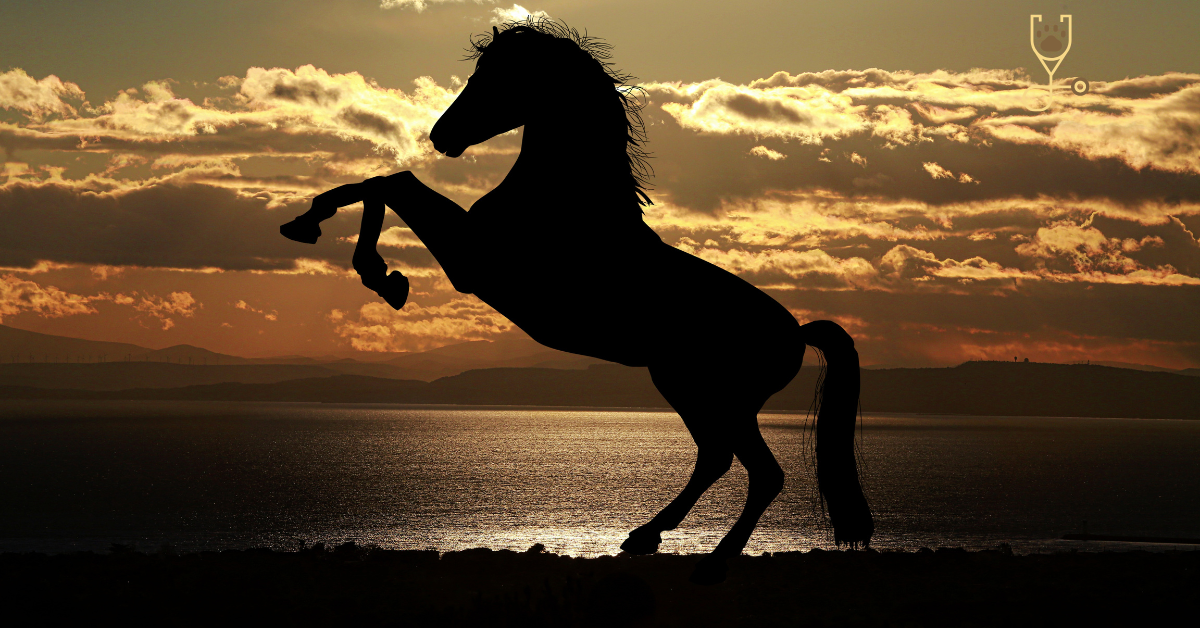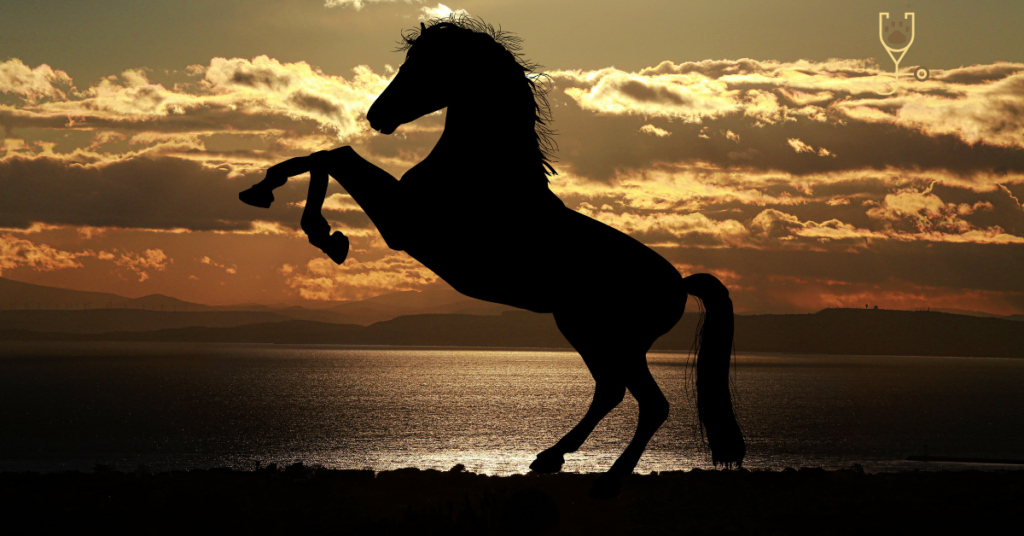If you’re like most people, there’s a good chance you only know what you’ve seen on TV or in movies when it comes to horses. Maybe you think they’re all gentle giants who are just looking for a kind pat on the back and a sugar cube or two. While this may be true for some horses, it’s not always the case. In reality, horses are complex animals with a range of personality types and needs. So, before you go out and buy your first horse (or even if you’ve been around horses your whole life), it’s important to learn all you can about them. This comprehensive guide will reveal everything you need to know about horses, from their personality traits to the best way to care for them. You’ll be an expert in no time!
History And Origin Of Horses
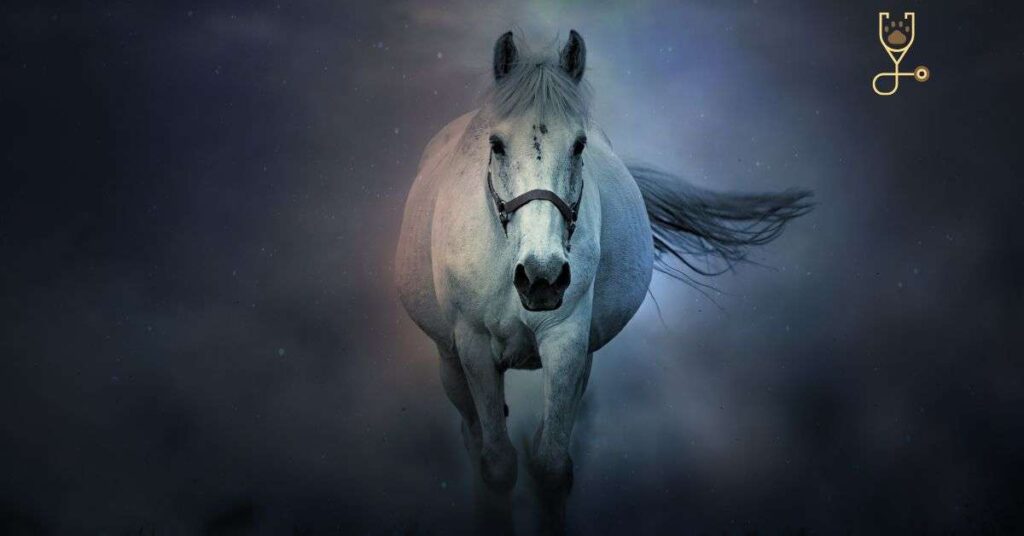
The horse is one of the most popular animals in the world. They have been used by humans for centuries, and their popularity only seems to be increasing. There are many different breeds of horses, and each one has its own unique set of characteristics. Some horses are bred for racing, while others are bred for work or pleasure. No matter what the purpose, horses are amazing creatures that have a long and fascinating history.
The first horses were likely wild ponies that lived in the steppes of Central Asia. These ponies were small and had a thick coat of fur to protect them from the cold weather. They were also very hardy, which helped them to survive in the harsh conditions of the steppes. Over time, humans began to domesticate these ponies and use them for transportation and labor.
Horses were first brought to Europe by the Celts in the early Iron Age. The Celts were nomadic people who traveled around Europe and Britain. They used horses to pull their chariots, which were used in battle. The Celts were also the first people to use saddles and bridles on horses.
The Romans were the next major civilization to use horses. They conquered most of Europe and Britain, and they brought horses with them. The Roman army used horses to pull their war chariots and to carry their soldiers into battle. Roman horses were also used for transportation and farming. After the fall of the Roman Empire, horses were still used by the people of Europe.
During the Middle Ages, horses were used mostly for warfare. Knights rode horses into battle, and they used them to charge at enemy lines. Horses were also used to carry supplies and equipment during wars. In the late Middle Ages, horses began to be used for transportation and farming again.
The Age of Exploration was a time when Europeans began to explore the world. They sailed to new lands and discovered new cultures. Horses were brought to the Americas by the Spanish in the early 1500s. Horses were also brought to Australia and New Zealand by the British in the late 1700s.
Today, horses are still used for transportation, farming, and warfare. They are also used for recreation and sport. Horse racing is a popular sport all over the world, and horseback riding is a popular hobby. Horses are also used in movies and television. They are truly amazing creatures that have a long and rich history.
What is a Horse Biologically?
A horse is a mammal of the family Equidae. The horse has evolved over the past 45 to 55 million years from a small multi-toed creature, Eohippus, into the large, single-toed animal of today. Horses are herbivores with a digestive system that allows them to easily digest grasses and other plant material.
The horse is adapted to running, traveling over long distances, and carrying or pulling loads. They are kept by humans for riding, racing, working, and as a source of food.
Horses are social animals and live in herds. They communicate with each other using a variety of sounds and body language.
Scientific Name: Equus caballus
Scientific hierarchy of horses
Phylum: Chordata
Class: Mammalia
Order: Perissodactyla
Family: Equidae
Genus: Equus
Species: E. ferus
Life span
The average life span of a horse is 25 years, though some may live into their 30s or 40s.
Size
Horses range in size from the miniature horse, which stands just over two feet tall at the shoulder, to the Clydesdale, which can be over six feet tall at the shoulder. The average horse stands about four feet tall at the shoulder.
Color
Horses come in a variety of colors, from pure white to nearly black. The most common colors are brown, black, and chestnut. Less common colors include bay, roan, dun, gray, pinto, and Appaloosa.
Temperament
Horses are social animals and live in herds. They communicate with each other using a variety of sounds and body language. Horses are also highly intelligent animals and can be trained to perform a variety of tasks.
Role of Horses
Horses are used for a variety of purposes, including riding, racing, working, and as a source of food.
- Riding
Horses have been used by humans for transportation and travel for thousands of years. Today, horses are still used for riding, both for recreation and competition.
- Racing
Horses have also been used for racing since ancient times. Racing is a popular sport in many countries around the world.
- Working
Horses were once an essential part of farm life, helping to plow fields and carry goods. Today, horses are still used for a variety of jobs, including police work, herding cattle, and giving therapy rides to children and adults.
- Food
Horse meat is considered a delicacy in some cultures, and is used in a variety of dishes. horse meat is also used in pet food
Fun facts about horses
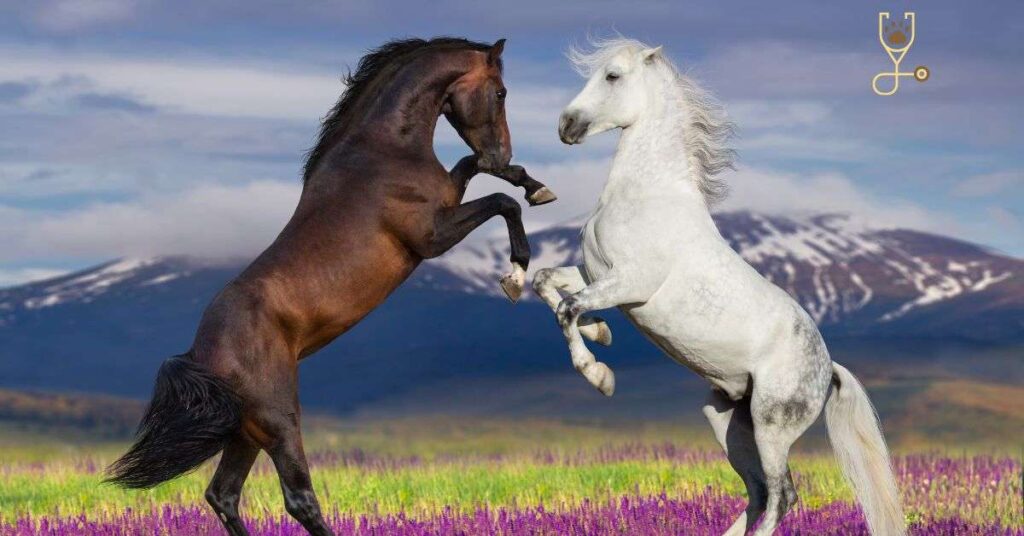
- Horses are able to sleep both lying down and standing up.
- Horses have better eyesight than humans and can see in color.
- Horses have a good sense of smell and can remember up to 50 different scents.
- Horses can run shortly after birth.
- A horse’s heart weighs about nine pounds and beats about 40 times per minute.
- Horses have 32 teeth.
- A newborn horse is called a foal.
- A male horse is called a stallion, and a female horse is called a mare.
- A group of horses is called a herd.
- Horses are measured in hands. One hand is equal to four inches.
- The tallest horse ever recorded was a Shire horse named Sampson, who stood 21.2 hands high (approximately 86 inches, or 7 feet 2 inches).
- The smallest horse ever recorded was a miniature horse named Thumbelina, who stood just 17 inches tall.
- The fastest horse ever recorded was a Quarter Horse named Winning Colors, who ran the quarter mile in 20.57 seconds.
- The world’s oldest horse was a 56-year-old Icelandic horse named Lucky, who died in 2010.
- Horses have been used by humans for transportation and travel for thousands of years.
- Horses are social animals and live in herds.
- Horses are also highly intelligent animals and can be trained to perform a variety of tasks.
- Horses are used for a variety of purposes, including riding, racing, working, and as a source of food.
Physical Appearance Of Horses
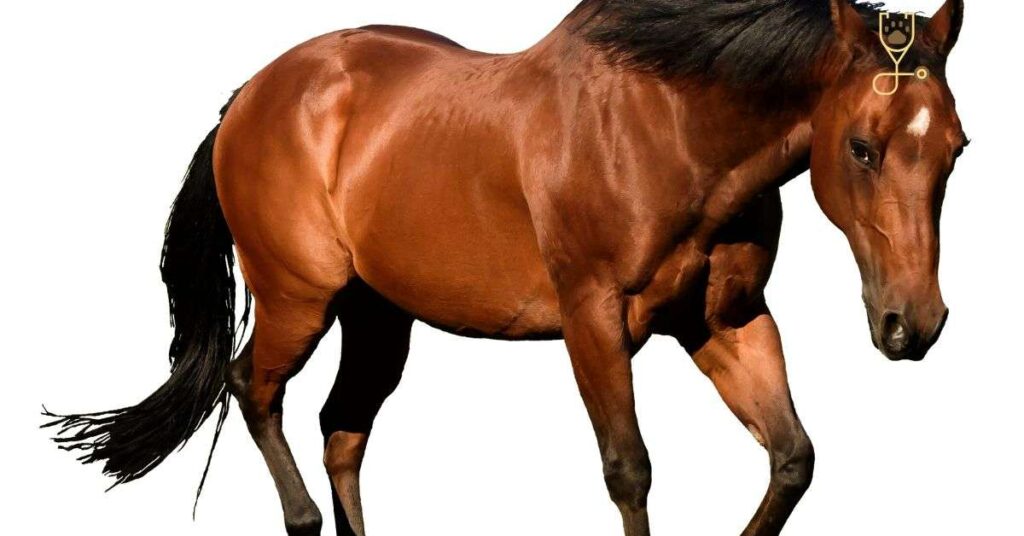
The horse is a beautiful animal. It is of different colors such as black, white, brown, chestnut, bay, dun, etc. And its height is about 16 hands high i.e. 5 feet at the shoulder on average. It has a long neck, four legs, and a short tail. Its head is beautiful with big eyes and long ears. It has a long mane and tail. The horse is a very strong animal. It can run very fast. It is very useful to us.
Amazing Names of Horses being Used Worldwide
There are all sorts of different horses in the world, each with its own unique name. But what about the names that people use for their horses? Here is a list of some popular horse names from around the globe.
1. Spirit
2. Blaze
3. Thunder
4. Black Beauty
5. Lady
6. Lucky
7. Sunshine
8. Starlight
9. Miracle
10. Dreamer
11. Beauty
12. Prince
13. Sassy
14. Angel
15. Dancer
16. Pegasus
17. Miracle
18. Tinkerbell
19. Jasmine
20. Cinderella
21. Belle
22. Snow White
23. Sleeping Beauty
24. Rapunzel
25. Mulan
26. Ariel
27. Aurora
28. Tiana
29. Jasmine
30. Pocahontas
31. Moana
32. Mulan
33. Belle
34. Ariel
35. Tiana
36. Pocahontas
37. Moana
38. Anna
39. Elsa
40. Merida
41. Anastasia
42. Drizella
43. Aurora
44. Ariel
45. Snow White
46. Rapunzel
47. Cinderella
48. Sleeping Beauty
49. Belle
50. Jasmine
51. Pocahontas
52. Mulan
53. Tiana
54. Moana
55. Anna
56. Elsa
57. Merida
58. Anastasia
59. Drizella
60. Aurora
61. Ariel
62. Snow White
63. Rapunzel
64. Cinderella
65. Sleeping Beauty
66. Belle
67. Jasmine
68. Pocahontas
69. Mulan
70. Tiana
71. Moana
72. Anna
73. Elsa
74. Merida
Popular Horse Breeds in The World
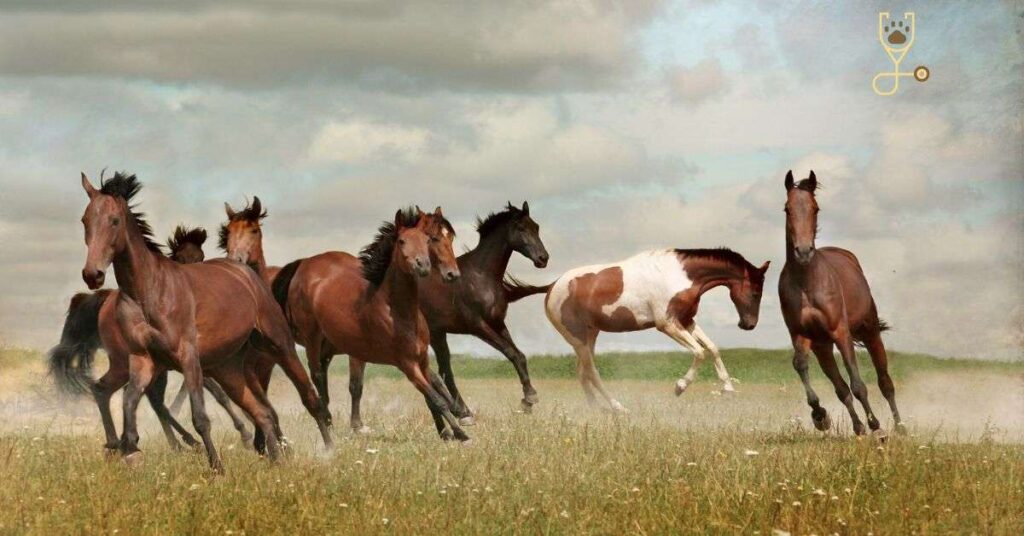
There are currently over 400 recognized horse breeds in the world. Although most horses today are used for sport or pleasure, some breeds have developed specific talents that make them particularly useful in certain fields. Here is a list of just a few of the many different horse breeds found around the globe:
American Quarter Horse: One of the most popular horse breeds in the United States, the American Quarter Horse is known for its speed and agility. Used extensively in racing, rodeos, and other cowboy-themed events, this breed is also popular as a working ranch horse.
Arabian Horse: One of the oldest and most recognizable horse breeds in the world, Arabians are prized for their beauty and grace. Often used in endurance riding and dressage, Arabians are also popular as pleasure horses.
Clydesdale Horse: A large draft breed originating in Scotland, Clydesdales are best known for their use in pulling heavy loads. These gentle giants are also popular as show horses and parade animals.
Friesian Horse: This stunning black horse breed is of Dutch origin and is known for its elegant movements and fairytale-like appearance. Friesians are often used in dressage and driving and are also popular as pleasure horses.
Icelandic Horse: A small but sturdy horse breed from Iceland, the Icelandic horse is known for its sure-footedness and ability to traverse rough terrain. These versatile horses are used for a variety of purposes, including riding, driving, and packing.
Mustang: A wild horse of North American origin, the mustang is best known for its hardiness and endurance. Although once predominantly feral, mustangs are now often trained and used as working ranch horses and pleasure animals.
Paso Fino: A gaited horse breed from South America, the Paso Fino is known for its smooth, comfortable gait. These versatile horses are used for a variety of purposes, including riding, driving, and packing.
Percheron: A large draft breed originating in France, Percherons are known for their strength and power. Often used in agriculture and forestry, these hardworking horses are also popular as show animals and parade animals.
Shetland Pony: One of the smallest horse breeds in the world, the Shetland pony is native to the Shetland Islands off the coast of Scotland. These hardy ponies are often used as working animals on small farms and ranches.
Thoroughbred: A popular racehorse breed, the Thoroughbred is known for its speed and athleticism. These horses are also popular as sport horses and pleasure animals.
These are just a few of the many different horse breeds found around the globe. Each breed has its own unique history, appearance, and abilities that make it special in its own way.
Health Problems Of Horses And Their Treatments
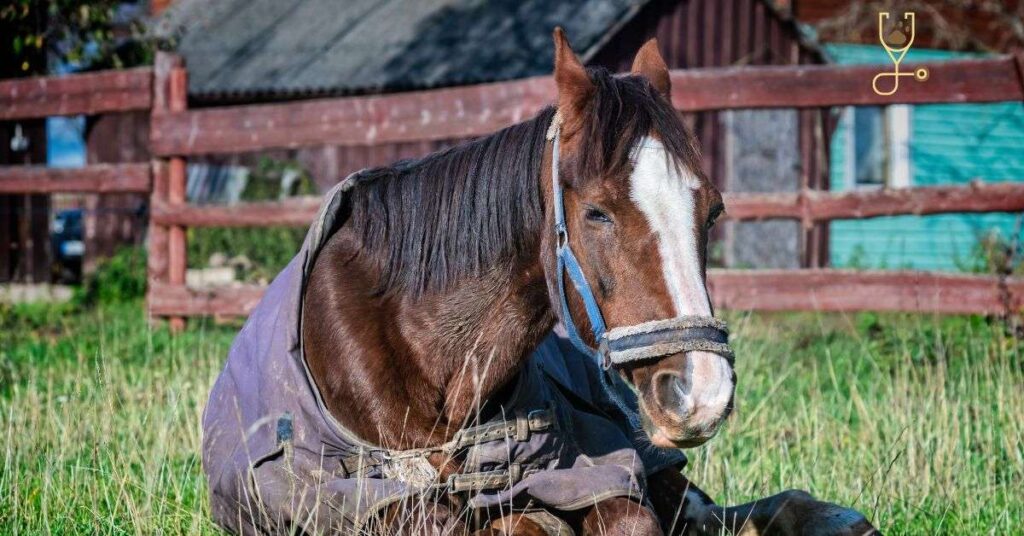
Horses are beautiful animals that have been used by humans for centuries. However, like all animals, they are susceptible to health problems. Some of these problems are minor and can be easily treated, while others can be more serious and even life-threatening.
The following is a list of some common health problems that horses can experience, as well as information on how they are typically treated:
1) Colic: Colic is one of the most common health problems faced by horses. It is characterized by abdominal pain and discomfort. Horses with colic may paw at the ground, roll around, sweat excessively, and have a rapid heartbeat. Treatment usually involves administering medication to relieve pain and discomfort, as well as providing supportive care such as IV fluids.
2) Lameness: Lameness is another common problem experienced by horses. It occurs when there is pain or inflammation in the horse’s limbs. Treatment usually involves rest, ice, and physical therapy.
3) Respiratory problems: Horses can also suffer from respiratory problems such as pneumonia and bronchitis. Treatment usually involves antibiotics and/or other medication to clear the infection.
4) Gastric ulcers: Gastric ulcers are a common problem in horses and can be caused by stress, infection, or certain medications. Treatment usually involves medication to reduce stomach acid and promote healing.
5) Cushing’s disease: Cushing’s disease is a hormonal disorder that can cause a number of symptoms including weight gain, increased appetite, lethargy, and hair loss. Treatment usually involves medication to regulate the horse’s hormone levels.
6) infections: Horses can also succumb to a variety of infections, both internal and external. Treatment usually involves antibiotics or other medication, as well as in some cases surgery.
7) injuries: Horses are also susceptible to injuries, both from accidents and overuse. Treatment usually involves rest, ice, physical therapy, and in some cases surgery.
How To Prevent Health Problems In Horses
There are a number of things that can be done to help prevent health problems in horses. These include:
1) Providing a healthy diet: A healthy diet is important for all animals, and horses are no exception. A diet that is high in fiber and low in sugar will help keep your horse’s digestive system working properly and reduce the risk of colic.
2) Keeping up with vaccinations: Vaccinations can help protect horses from a variety of diseases. It is important to talk to your veterinarian about which vaccinations are appropriate for your horse.
3) Practicing good hygiene: Good hygiene practices such as regularly cleaning stalls and paddocks, and washing hands after handling horses can help reduce the spread of infections.
4) Avoiding stressful situations: Stress can contribute to a number of health problems in horses, so it is important to try and avoid stressful situations if possible.
5) Providing regular exercise: Exercise is important for horses to maintain their health and fitness. A regular exercise routine will help keep your horse’s muscles and joints healthy and reduce the risk of injuries.
How to Diagnose Health Problem In Horses
There are a number of signs and symptoms that can indicate that a horse is suffering from a health problem. These include:
1) Change in appetite: A decrease or increase in appetite can be a sign that something is wrong.
2) Change in behavior: Horses that are normally calm may become agitated or vice versa. This can be a sign of pain or discomfort.
3) Change in appearance: horses that suddenly lose weight, develop bald spots, or have new lumps or bumps on their body may be sick.
4) Change in stool: horses that have changes in their stool, such as diarrhea or constipation, maybe having digestive problems.
5) Lameness: Lameness is often the first sign that something is wrong with a horse. If your horse is limping or holding up a limb, it may be in pain.
6) Respiratory problems: Horses with respiratory problems may have a cough, trouble breathing, or an increased heart rate.
7) Gastric ulcers: Horses with gastric ulcers may have a loss of appetite, weight loss, or changes in behavior.
8) Cushing’s disease: Horses with Cushing’s disease may have a pot-bellied appearance, increased appetite, hair loss, or lethargy.
What To Feed Your Horse?
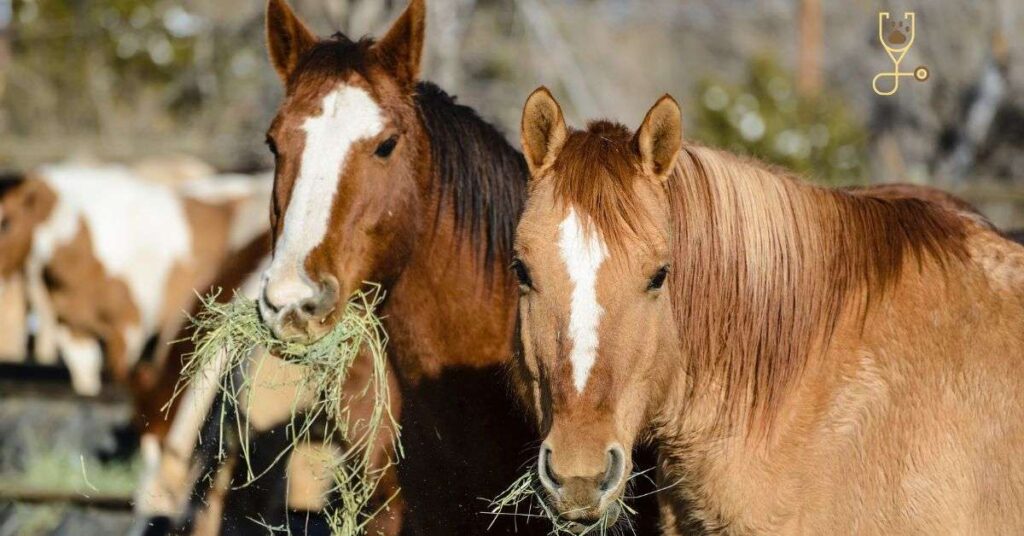
There are a number of things to consider when choosing what to feed your horse. These include:
1) The type of horse: Different types of horses have different nutritional needs. For example, pregnant mares or growing foals will need more calories than an adult horse in light work.
2) The type of feed: There are a variety of feeds available for horses, including hay, straw, pellets, and grain. It is important to choose a feed that is appropriate for your horse’s age, weight, and activity level.
3) The type of work: Horses that are in heavy work will need more calories than those in light work. For example, a racehorse in training will need more food than a horse that is used for pleasure riding.
4) The time of year: Horses may need different types and amounts of feed depending on the time of year. For example, horses in colder climates may need more hay to stay warm in the winter.
5) The environment: The environment where the horse lives can also affect its nutritional needs. For example, horses that live in hot, humid climates may need more water to stay hydrated.
When it comes to feeding your horse, there is no one-size-fits-all solution. The best way to determine what to feed your horse is to talk to a veterinarian or equine nutritionist. They will be able to recommend a diet that is tailored to your horse’s individual needs.
How Much To Feed Your Horse?
The amount of food that a horse needs will vary depending on a number of factors, including the type of horse, the type of feed, and the amount of work the horse is doing. A general rule of thumb is to provide 1-2% of the horse’s body weight in feed per day. For example, a 1000 lb (450 kg) horse would need 10-20 lbs (4.5-9 kg) of food per day. It is important to note that horses should be fed smaller meals more often rather than large meals. For example, it is better to feed four smaller meals per day than two large meals.
What Are The Different Types Of Horse Feed?
There are a variety of types of horse feed available, including hay, straw, pellets, and grain. The type of feed you choose will depend on a number of factors, including the type of horse, the type of work the horse is doing, and the time of year.
- Hay is the most common type of horse feed. It is made from dried grass and other plants and is typically fed to horses as forage. Hay should be fed in small amounts several times per day.
- Straw is another type of forage that is made from dried grass and other plants. It is typically fed to horses as bedding, but it can also be used as feed. Straw should be fed in small amounts several times per day.
- Pellets are a type of horse feed that is made from compressed hay or straw. They are typically fed to horses as a concentrate. Pellets should be fed in small amounts several times per day.
- Grain is a type of horse feed that is made from seeds, such as corn, oats, or barley. Grain is typically fed to horses as a concentrate. Grain should be fed in small amounts several times per day.
- Water is an important part of a horse’s diet and should be available at all times. Horses should have access to clean, fresh water. They should also have access to salt, minerals, and Vitamins A, D, and E.
How To Feed Your Horse?
When feeding your horse, it is important to keep the following things in mind:
1) Horses should be fed smaller meals more often rather than large meals.
2) Horses should have access to clean, fresh water at all times.
3) Horses should also have access to salt, minerals, and Vitamins A, D, and E.
4) Never feed your horse moldy or spoiled hay, straw, or grain.
5) Never feed your horse beans, cabbage, or other plants that can cause gas.
6) Never feed your horse chocolate, coffee grounds, or other foods that are toxic to horses.
By following these tips, you can help ensure that your horse remains healthy and happy.
How to Take Care of Your Horse?
The best way to take care of your horse is to provide it with a nutritious diet, clean water, and plenty of exercises. Here are some tips on how to do just that:
1) Feed your horse a nutritious diet: The best way to determine what to feed your horse is to talk to a veterinarian or equine nutritionist. They will be able to recommend a diet that is tailored to your horse’s individual needs.
2) Provide clean water: horses should have access to clean, fresh water at all times. They should also have access to salt, minerals, and Vitamins A, D, and E.
3) Exercise your horse: Exercise is important for horses of all ages. It helps to keep them healthy and happy.
4) Monitor your horse’s health: Be sure to check your horse’s weight, body condition, and temperature on a regular basis. If you notice any changes, be sure to contact a veterinarian.
5) Have your horse vaccinated: Vaccinations help to protect horses from diseases. Be sure to talk to a veterinarian about which vaccinations are right for your horse.
6) Grooming: Grooming helps to keep your horse clean and healthy. It also helps to build a bond between you and your horse.
7) Horse-proof your home: If you have horses, it is important to horse-proof your home. This means removing anything that could potentially harm them, such as poisonous plants or sharp objects.
8) Seek professional help: If you are having trouble taking care of your horse, seek professional help from a veterinarian, equine nutritionist, or equine specialist.
How To Groom Your Horse?
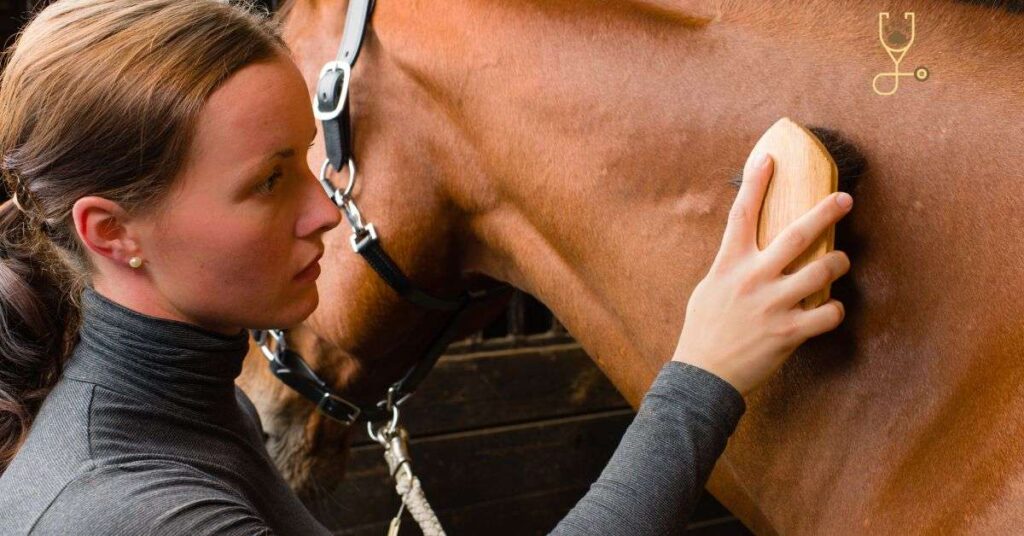
1) Start by brushing your horse’s body to remove any dirt or debris.
2) Next, brush your horse’s mane and tail to help keep them clean and free of tangles.
3) Once you have brushed your horse’s body and mane/tail, you can begin grooming their hooves. Start by picking out any stones or other objects that may be stuck in their hooves. Then, use a hoof pick to clean out the crevices of the hooves. Finally, use a soft brush to buff the hooves and bring out their natural shine.
4) Once you have finished grooming your horse’s hooves, you can move on to their mane and tail. If your horse’s mane/tail is particularly long or thick, you may need to use a detangler or mane comb to help with brushing.
5) Once you have brushed and detangled your horse’s mane/tail, you can begin braiding or banding it. This will help to keep it clean and free of tangles.
6) Finally, give your horse a good once-over with a soft brush to remove any loose hair or dirt. Be sure to pay special attention to their legs, as this is where most horses accumulate dirt and debris.
What Used To Groom Your Horse
-A body brush: A body brush is used to remove dirt and debris from your horse’s coat.
-A mane comb or detangler: A mane comb or detangler is used to help brush through your horse’s mane and tail.
-A hoof pick: A hoof pick is used to clean out the crevices of your horse’s hooves.
-A hoof brush: A hoof brush is used to buff your horse’s hooves and bring out their natural shine.
-A soft brush: A soft brush is used to give your horse a final once-over, paying special attention to their legs.
Behavior Problems In Horses
1) Boredom: Boredom is a common behavior problem in horses. One way to combat boredom is to provide your horse with plenty of exercises. Another way to combat boredom is to feed them a diet that is high in fiber.
2) Separation anxiety: Separation anxiety is another common behavior problem in horses. One way to combat separation anxiety is to slowly introduce your horse to being away from you. Another way to combat separation anxiety is to provide them with a “comfort object”, such as a favorite toy or blanket.
3) Stallion aggression: Stallion aggression is a behavior problem that is specific to stallions. The best way to combat stallion aggression is to have your stallion castrated.
4) Mare aggression: Mare aggression is a behavior problem that is specific to mares. The best way to combat mare aggression is to have your mare spayed.
5) Gelding aggression: Gelding aggression is a behavior problem that is specific to geldings. The best way to combat gelding aggression is to have your gelding castrated.
6) Herding instinct: Herding instinct is a behavior problem that is common in horses that were bred for work or racing. The best way to combat the herding instinct is to provide your horse with plenty of exercises. Another way to combat the herding instinct is to put them in a pasture with other animals.
7) Bucking: Bucking is a behavior problem that is common in young horses. The best way to combat bucking is to train your horse not to do it. Another way to combat bucking is to use a hackamore or similar device instead of a bit.
Read More: How to Stop a Horse From Bucking
8) Kicking: Kicking is a behavior problem that is common in horses. The best way to combat kicking is to train your horse not to do it. Another way to combat kicking is to use a stallion chain or a similar device instead of a halter.
9) Rearing: Rearing is a behavior problem that is common in horses. The best way to combat rearing is to train your horse not to do it. Another way to combat rearing is to use a lunge line or a similar device instead of a lead rope.
Learn More: How to Stop Rearing in Horses
10) Biting: Biting is a behavior problem that is common in horses. The best way to combat biting is to train your horse not to do it. Another way to combat biting is to use a salt block or a similar device instead of a treat.
Learn More: How to Stop Your Horse From Biting
- How to Stop Wood Chewing in Horses
- Social Behaviors of Wild and Domestic Horses
- Why Your Horse Is Tossing Its Head
- Why Horses Roll
- 10 Most Common Ways You Can Be Hurt By a Horse
How To Train Your Horse?
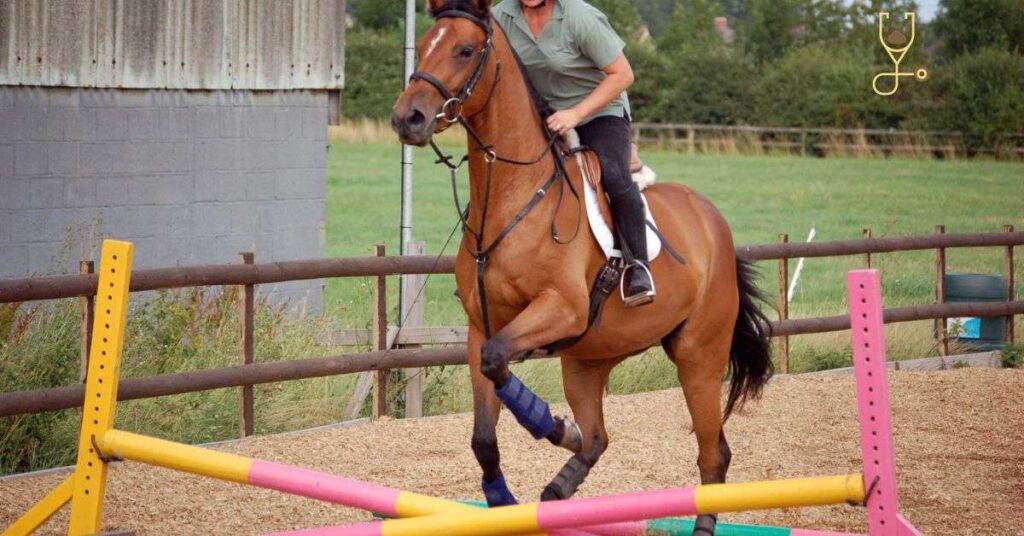
1) Start with the basics: The first step to training your horse is to start with the basics. This includes teaching them how to stand, walk, and trot.
2) Progress to more advanced tricks: Once your horse has mastered the basics, you can begin teaching them more advanced tricks. These could include things like turning in circles or jumping over obstacles.
3) Use positive reinforcement: When training your horse, it is important to use positive reinforcement. This means rewarding them for good behavior and ignoring bad behavior.
4) Be consistent: Another important thing to remember when training your horse is to be consistent. This means that you should always do the same thing whenever they exhibit a certain behavior. For example, if you always give them a treat when they stand still, they will learn that this is what you want them to do.
5) Have patience: It is important to have patience when training your horse. This is because it will take time for them to learn new things. Just be sure to remain consistent and use positive reinforcement, and eventually, they will get it!
More about training & grooming horses:
- Horse Training Tools & Riding Crops and Whips
- Horse Training Tools: Martingales
- Horse Training Tools: Spurs
- Horse Training: When Is Discipline Abuse?
- How to Calm a Nervous Horse
- How to Gentle Break a Horse for Riding
- How to Train the Hard-to-Bridle Horse
- 5 Simple Tricks to Teach Your Horse
- Dealing With the Dominant Horse
- How to Approach a Horse: Basic Horsemanship
- How to Make a Stubborn or Lazy Horse Go Forward
- Would Your Horse Make a Good Therapy Horse?
Play And Sports
Horses are social animals and love to play. Just like any other animal, they need to be able to express themselves physically and mentally. Play also helps them to stay fit and healthy.
There are a variety of different games and toys that you can use to keep your horse entertained. Some examples include:
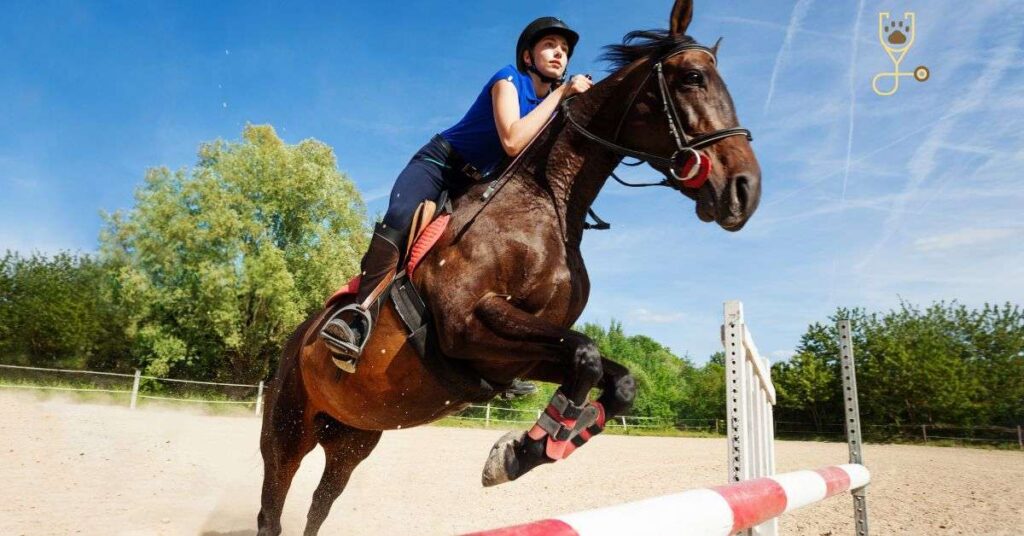
Games:
Ball games: You can either buy or make balls specifically for horses. These balls can be made out of anything from plastic to rubber to cloth.
Bucking barrels: These are barrels that are designed to spin around when the horse steps on them. This is a great way to provide mental stimulation for your horse.
Puzzle toys: There are a variety of different puzzle toys available for horses. These toys help to keep their minds active and can be made out of anything from wood to plastic.
Horseback riding: This is a great way for you and your horse to bond while getting some exercise. It is important to make sure that you are using the proper equipment and that you know how to ride safely before getting on a horse.
Horseback riding is a great way to bond with your horse while getting some exercise.
Horse’s Mating And Pregnancy
Horses mate by a process called “live cover.” stallion mounts the mare and they copulate. This can happen out in the pasture, or in an enclosed area such as a barn or corral. The average length of time for intercourse is about two minutes, but it can last up to 20 minutes.
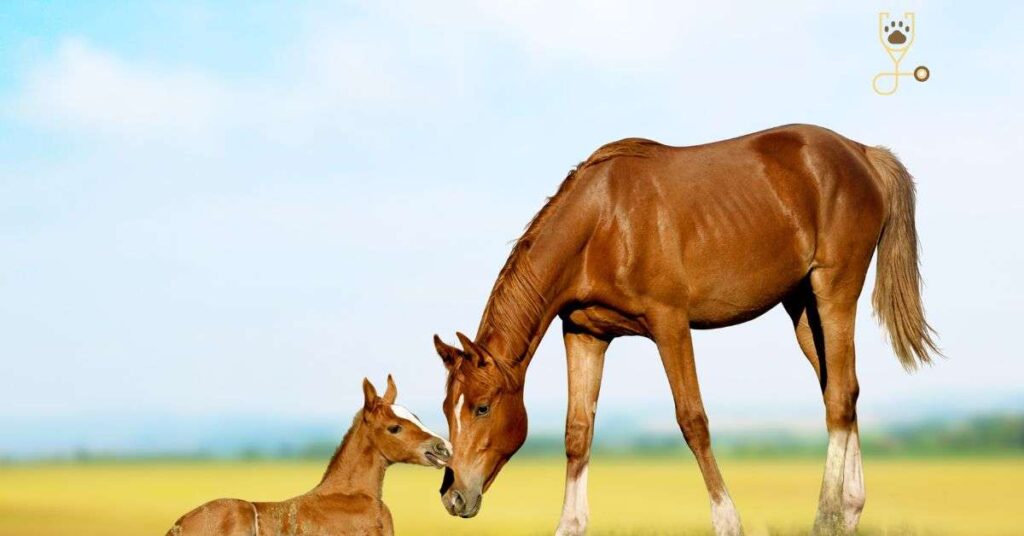
How does mating Occur?
The mare will usually stand still during mating but may move around some. The stallion will often hold onto the mane with his teeth while he mates.
After mating, the stallion will usually remain mounted on the mare for a few minutes before dismounting. The entire process of life cover, from start to finish, usually takes less than five minutes.
How often do horses mate?
Mares are usually bred once a year, although some may be bred more often. Stallions can mate more frequently, but they need a rest period of about 30 days between breeding episodes to allow their sperm count to recover.
What happens after a mare is pregnant?
Pregnancy in horses lasts for approximately 11 months. During this time, the mare’s body will undergo many changes as the fetus develops. The mare’s belly will gradually enlarge, and her nipples will become larger and darker. She may also experience mood swings and cravings for certain foods.
- In the final few weeks of pregnancy, the mare’s udder will fill with milk and she will begin to produce colostrum, a thick yellowish fluid that is rich in antibodies. This colostrum is vital for the newborn foal, as it will help protect them from disease.
When is the foal born?
Foals are usually born at night or in the early hours of the morning. The birth itself usually takes less than an hour, although it can sometimes take longer. Once the foal is born, it will be up and standing within minutes. They will then begin to nurse from their mother and will continue to do so for the next few months.
What happens after the foal is born?
The foal will continue to grow and develop over the next few months. They will begin to explore their surroundings and start playing with other foals. At around six months old, they will start to grow their adult teeth and will be fully weaned off their mother’s milk. By the time they are one year old, they will have the same physical proportions as an adult horse.
How To Care For A Pregnant Mare
Pregnant mares need to be well-fed and have plenty of fresh water available at all times. They should also be given ample time to exercise, as this will help keep them healthy and prevent problems such as colic.
It is important to have a veterinarian check the mare regularly during pregnancy to ensure that everything is progressing normally. They will also be able to advise on vaccinations and other preventive measures that should be taken.
When the foal is born, it is important to make sure that they get off to a good start in life. They should be given colostrum within the first few hours after birth and should be vaccinated against common diseases such as influenza and tetanus.
Adopting And Purchasing A Horse
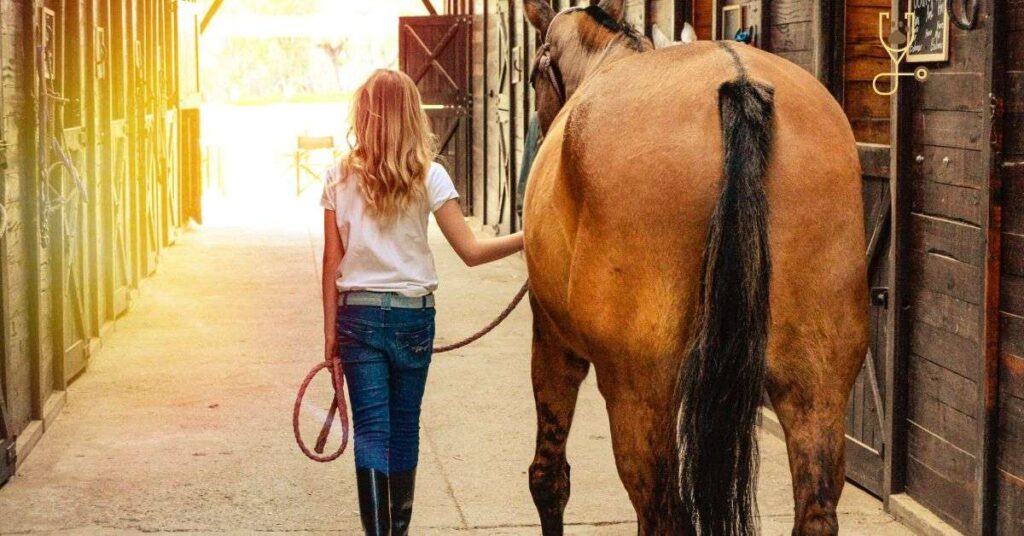
- Adopting a horse can be a cheaper and more rewarding option than purchasing one outright. There are many horses in need of homes, and by adopting one you will be giving them a second chance at life.
- When adopting a horse, it is important to do your research and choose an animal that will be compatible with your lifestyle and needs. It is also important to visit the horse’s current home to see how they are being cared for and to get to know them before making a commitment.
- Purchasing a horse can be a more expensive option, but it allows you to choose the exact animal that you want. If you are planning on competing with your horse, then it is important to purchase one that has the potential to be a successful competitor.
- It is also important to consider the cost of maintaining a horse before making a purchase. Horses require regular vet check-ups, vaccinations, and hoof care. They also need plenty of quality hay and grain, as well as regular access to fresh water.
- When purchasing a horse, it is important to deal with a reputable breeder or dealer. This will help to ensure that you are getting a healthy animal that has been properly cared for. It is also important to have the horse examined by a veterinarian before finalizing the purchase.
Where To Buy A Horse
There are many places to buy a horse, including online auctions, horse shows, and private dealerships. It is important to do your research and compare prices before making a purchase.
Some things to consider when purchasing a horse include the animal’s age, level of training, and physical condition. It is also important to think about what you will be using the horse for and to choose one that is suited to your needs.
It is also important to have a budget in mind before shopping for a horse. Horses can range in price from a few hundred dollars to several thousand depending on their breed, age, and level of training.
When buying a horse, it is important to remember that you are making a long-term commitment. Horses require regular care and attention, and they can live for up to 30 years. Before purchasing a horse, make sure that you are prepared to provide them with the best possible care.
Certificate Of Pedigree
When purchasing a horse, you may be given a certificate of pedigree. This document contains information on the horse’s ancestors and can be used to track the animal’s lineage.
- A certificate of pedigree is not required in order to purchase a horse, but it can be helpful in determining the animal’s worth. If you are planning on breeding the horse, then the pedigree can be used to ensure that the offspring are of high quality.
- When considering a horse for purchase, it is important to ask to see the animal’s certificate of pedigree. This document can give you valuable information on the horse’s background and can help you to make an informed decision about whether or not they are the right animal for you.
Horse Identification
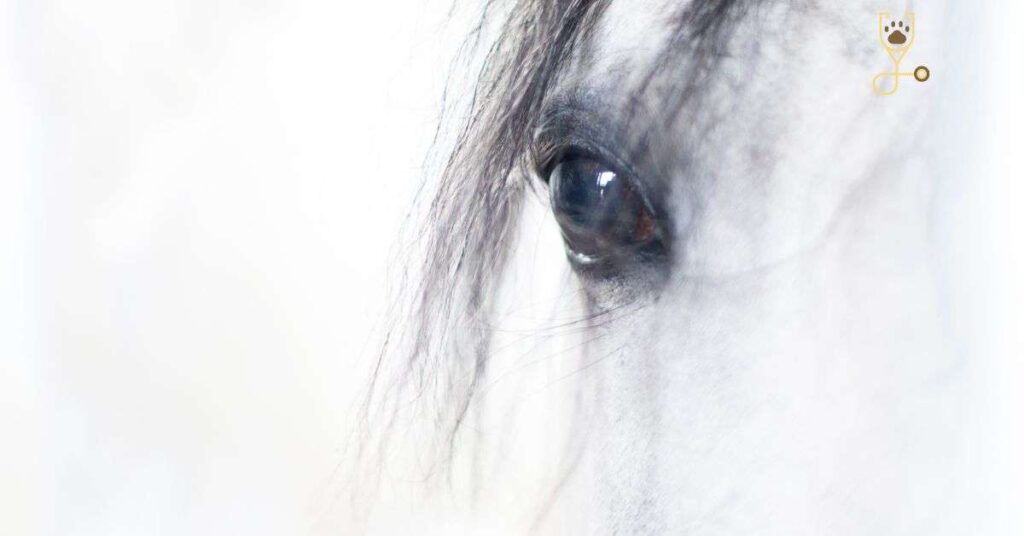
All horses must be identified before they can be registered with a breed association. There are many different methods of identification, but the most common is microchipping.
Microchips are small devices that are implanted under the horse’s skin. They contain a unique identifier that can be used to track the animal if it is ever lost or stolen. All horses that are purchased from a dealer or breeder should already have a microchip implant. If the horse you are considering does not have one, then it is important to ask the seller to have one inserted before finalizing the purchase. In addition to microchipping, horses can also be identified by their coat color, markings, and other physical characteristics. However, these methods are not as reliable as microchipping and can be easily faked.
Before purchasing a horse, it is important to make sure that the animal has a form of identification. This will help to ensure that the horse can be returned to you if it is ever lost or stolen. Microchipping is the most reliable form of identification, but other methods such as coat color and markings can also be used.
Horse Health
It is important to have a horse examined by a veterinarian before finalizing a purchase. The vet will check the animal for any health problems and will also provide you with their vaccination history.
Conclusion
So, there you have it! All you need to know about horses. We hope you found this guide informative and engaging. If you have any further questions, please don’t hesitate to ask in the comments below. Thank you for reading!
Frequently Asked Questions (FAQs)
How often should I groom my horse?
Depending on how often your horse is exercised, you should groom them at least once a week. If your horse is very active, you may need to groom them more often. You should also brush their teeth and pick their hooves out regularly.
How can I tell if my horse is healthy?
You should check your horse’s eyes, ears, nose, and mouth daily. Their coat should be shiny and their hooves should be free of cracks or chips. If you notice any changes in your horse’s appearance or behavior, please contact your veterinarian immediately.
What are the signs of a healthy pregnancy in horses?
A healthy pregnancy in horses is typically characterized by a lack of discharge from the vulva, regular appetite, and good body condition. If you notice any changes in your mare’s behavior or appearance, please contact your veterinarian immediately.
How can I tell if my horse is in pain?
If your horse is exhibiting any of the following behaviors, they may be in pain: pawing at the ground, lying down more often than usual, kicking at their belly, or not wanting to move. If you think your horse is in pain, please contact your veterinarian immediately.
Similar: Learn how to approach your horse to do basic examine.
What are the signs of colic in horses?
The most common sign of colic in horses is abdominal pain. Other signs include pawing at the ground, lying down more often than usual, kicking at their belly, or not wanting to move. If you think your horse may be clicking, please contact
